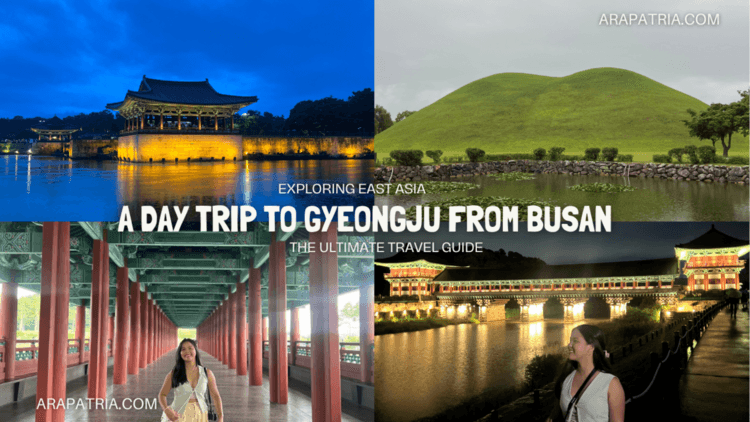If you’re visiting Busan and looking for a unique cultural experience beyond the beaches and city buzz, then a day trip to Gyeongju is a must. Often called “the museum without walls,” Gyeongju is one of South Korea’s most underrated gems—steeped in history, filled with UNESCO World Heritage Sites, and brimming with traditional Korean charm.
As the ancient capital of the Silla Dynasty, Gyeongju offers a glimpse into Korea’s past through royal tombs, Buddhist temples, restored bridges, and peaceful hanok villages. Whether you’re a history buff or simply someone who enjoys scenic, slow-paced travel, Gyeongju will leave you in awe.
I stayed in Busan for 4 days, and I added Gyeongju as part of my side trip since it’s just 2 hours away from Busan, which is perfect for a side trip, especially if you’re short on time. I’d say that’s one of the best things I’ve done!
In this travel guide, here are the top things to do in Gyeongju—especially if you’re visiting for the first time!
Table of Contents
Essential Travel Guides & Tips
Here are some quick tips to help you make the most of your day trip from Busan:
- Join a guided day tour: The easiest and most time-efficient way to explore Gyeongju is by booking a day trip via Klook (ARAPATRIAKLOOK for 5% OFF) or GetYourGuide (ARATHEADVENTURESS for 5%OFF), especially if you’re only spending a day.
- Wear comfy shoes: Most attractions require a bit of walking.
- Bring water and snacks: While there are cafés and restaurants in the area, it’s always handy to have a bottle with you.
- Stay for sunset: Some sites like Donggung Palace and Woljeonggyo Bridge are beautifully lit at night. In fact, these two historical places are the most beautiful places to visit at night.
- South Korean tourist visa: Ensure you apply for it 2-3 months before your flight. Here’s the ultimate guide on how to apply for a South Korean tourist visa for the first time!
Where is Gyeongju?
Gyeongju is a historic city located in the southeastern part of South Korea, in North Gyeongsang Province (Gyeongsangbuk-do).
It was the capital of the ancient Silla Kingdom (57 BC – 935 AD), which ruled most of the Korean Peninsula for nearly a thousand years. Because of its rich history, it’s often called a “museum without walls”, filled with UNESCO World Heritage sites, royal tombs, ancient temples, and cultural relics.
How to Get to Gyeongju from Busan
There are a few ways to travel to Gyeongju, depending on your preference:
By KTX (High-Speed Train)
- Travel Time: Approx. 30 minutes to Singyeongju Station
- From: Busan Station
- To: Singyeongju Station
- Cost: 11,000 won to 13,000 won
- From Singyeongju Station, take a taxi or local bus to the city center (15–20 minutes).
By Intercity Bus
- Travel Time: Approx. 1.5 to 2 hours
- From: Busan Central Bus Terminal (Nopo)
- To: Gyeongju Bus Terminal
- Cost: 5,000 won to 9,000 won
- The terminal is centrally located with easy access to attractions.
Via Tour Agency (Day Trip)
If you want a hassle-free itinerary, book a day tour with transportation included via Klook or GetYourGuide. It saves time and conveniently connects you to all the major sites.
Best Things to Do in Gyeongju
Here are the top attractions you can’t miss during your Gyeongju day trip:
Bulguksa Temple
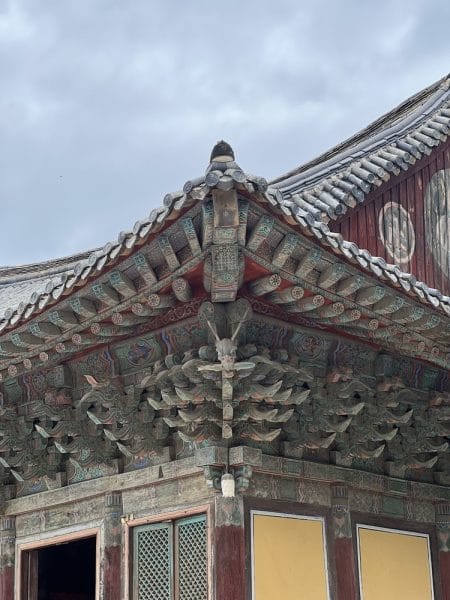
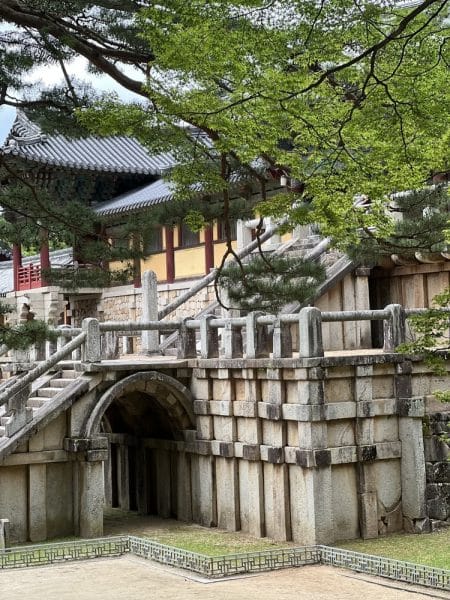
Bulguksa Temple is A UNESCO World Heritage Site and National Treasure, one of the most iconic Buddhist temples in Korea. This was built during the Silla Dynasty. In addition, this historic site features serene courtyards, intricate stone pagodas, and lotus lanterns that create a peaceful, almost timeless vibe.
It’s more than just a temple—it’s a cultural symbol, representing Korea’s religious and architectural heritage. You’ll find yourself wandering slowly through the stone steps and temple gates, fully immersed in its tranquil atmosphere.
Gyochon Traditional Village
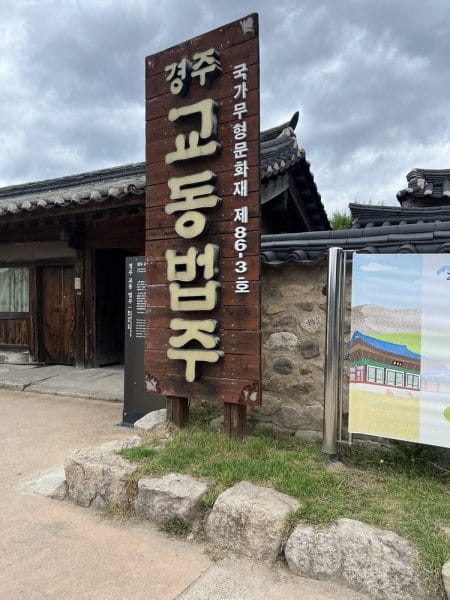
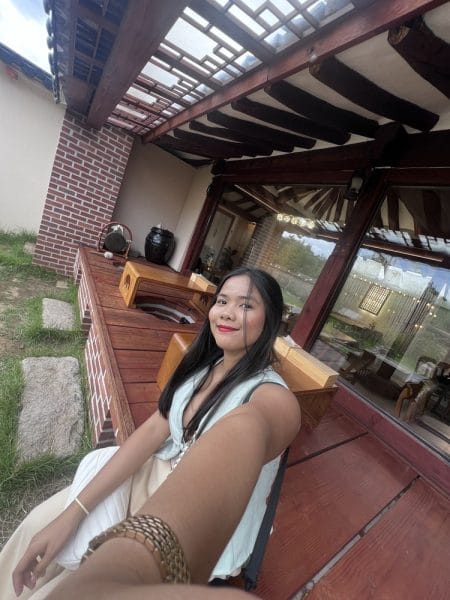
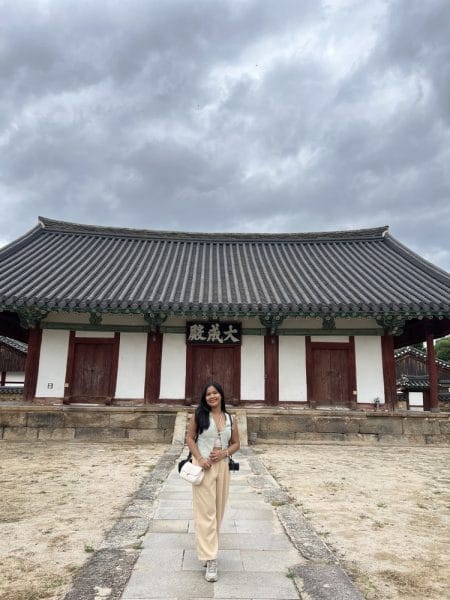
This is where traditional Korean houses, known as hanok, line the streets. It’s a walkable neighborhood where you can explore preserved architecture, visit cultural centers, and even stop for a meal in a hanok restaurant, just like we did!
It’s a cozy, nostalgic village that offers a rare glimpse into Korea’s historical daily life. You’ll love how photogenic and peaceful it feels.
Daereungwon Tomb Complex
This is definitely one of the most fascinating parts of Gyeongju. Daereungwon Tomb Complex is where grassy mounds mark the resting places of ancient kings and nobles. These giant earthen tombs are both mysterious and monumental.
Also, don’t miss the nearby Cheonmachong Tomb, which you can actually enter. There’s also a museum that explains the significance and construction of the tombs—perfect for history lovers.
Woljeonggyo Bridge
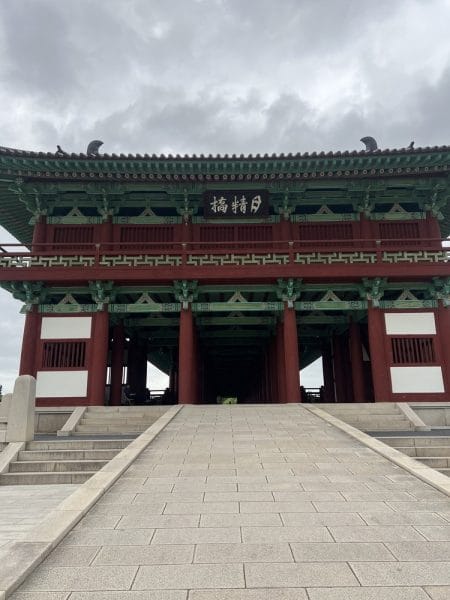

Woljeonggyo Bridge was personally one of my favorite photo spots in Gyeongju. Rebuilt to match its original design, this stunning wooden bridge features bold red pillars and elegant architectural details.
It’s beautiful during the day, but even more magical when it lights up at night. Trust me, it really feels like walking into a scene from a Korean historical drama!
Donggung Palace and Wolji Pond
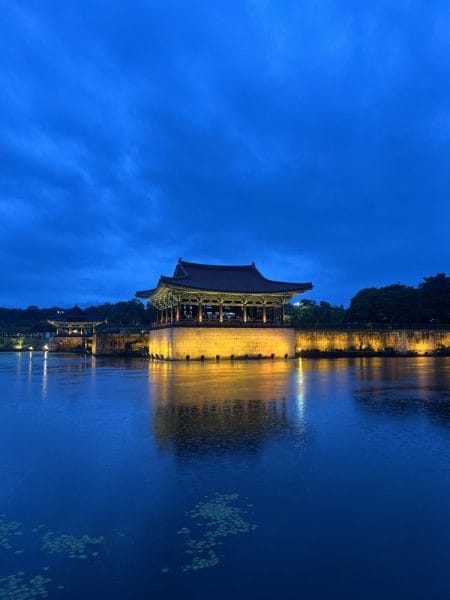
End your Gyeongju trip with a sunset visit to Donggung Palace and Wolji Pond, formerly part of a royal villa complex. As the sun sets, the lights reflect off the still water, creating a dreamlike, serene atmosphere.
This is one of the most iconic night views in Korea. If you can, stay until after dark to fully appreciate the calm, reflective beauty of the site. You won’t regret it!
Frequently Asked Questions
Is Gyeongju worth visiting if I’m already in Seoul or Busan?
Absolutely. Gyeongju is one of Korea’s most culturally rich cities, and it offers something very different from the urban scenes of Seoul or the coastal vibes of Busan.
Can I do Gyeongju in just one day?
Yes! A well-planned day trip lets you cover the key historical sites comfortably. Joining a guided day tour helps maximize your time.
Do I need to book tickets in advance?
For day tours via Klook or GetYourGuide—yes. For individual attractions, most allow on-site ticket purchase, but going with a group saves time and offers historical context.
When is the best time to visit Gyeongju?
Spring (April–May) and autumn (September–November) offer the best weather and scenery. Avoid major holidays for a more peaceful experience.
Is Gyeongju family-friendly?
Yes! Kids will enjoy the open spaces, ancient tombs, and photo-worthy spots. Just be ready to walk a lot.
From ancient temples and royal tombs to peaceful bridges and traditional villages, it’s a place that lets you truly slow down and connect with Korea’s rich past. No wonder it is considered a UNESCO World Heritage Site! Visiting this iconic place makes you learn more about Korea’s rich history.
If you’re in Busan and have a free day, don’t think twice; make sure to add Gyeongju to your Korea itinerary. Whether you go solo or with a guided group, this charming city will leave a lasting impression and plenty of photos you’ll want to look back on.
Latest Posts
- Ha Giang Loop Travel Guide: Vietnam’s Most Scenic Motorbike Adventure
- How to Get from Hanoi to Ha Giang, Northern Vietnam: Easy Step-by-Step Guide
- 3-Day Singapore Itinerary: Best Things to Do & See
- Singapore Tourist Pass: Is It Worth It?
- Harry Potter Visions of Magic in Singapore: A Day in Sentosa Island
Read Next
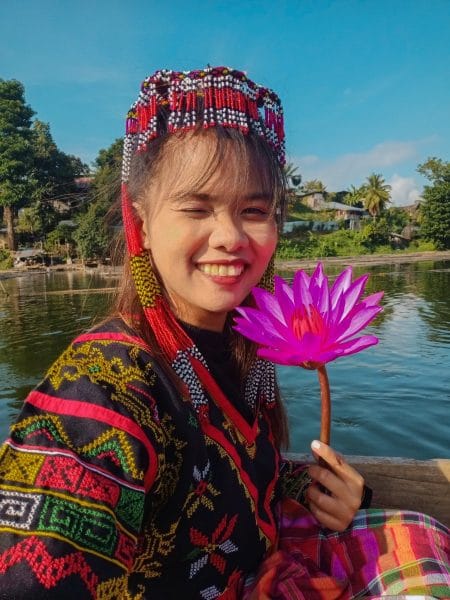
Hey, my name is Ara Patria—a solo female traveler who is in her quest of traveling the world. I write and learn about life through the lenses of my camera, personal experiences, and adventures. Join me as I unravel the mystery of life through exploring the wanders of the world.
